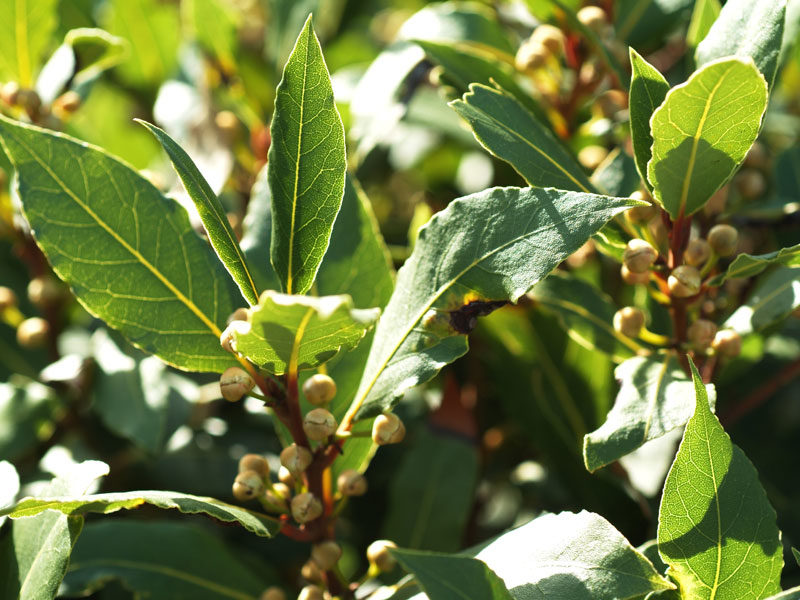Laurel (Laurus nobilis)

The real laurel or spice laurel from the laurel family originally comes from the Near East and later spread across the Mediterranean region. The bay tree can reach a height of up to 10 metres and bears leathery, evergreen and aromatically fragrant leaves.
While in the past both the leaves and the fruits of the bay laurel were used in medicine, today it is mainly the leaves that are used as a kitchen spice. Both the leaves and the black-blue fruits, which are about the size of a cherry, are rich in essential oils. The “laurels” contain essential oil with cineole and pinene as well as fatty oil with lauric, oleic, palmitic and linoleic acid, phytosterols and lauric alcohol.
In the past, laurel oil extracted from laurel fruits was used externally for ulcers, bruises, rheumatic complaints, insect repellent and, due to its skin-irritating effect, to stimulate horn growth on the horse’s hoof. In folk medicine, the use of ground laurel fruits is described for diseases of the digestive organs and to increase urinary excretion. In old books on medicine there are references to the fact that the administration of bayberries facilitates childbirth and stimulates the discharge of the afterbirth.